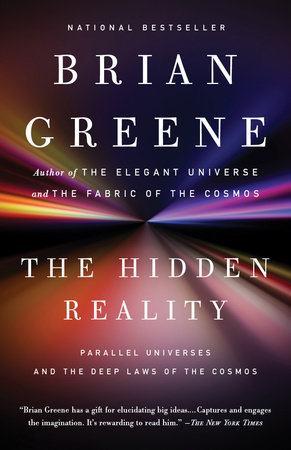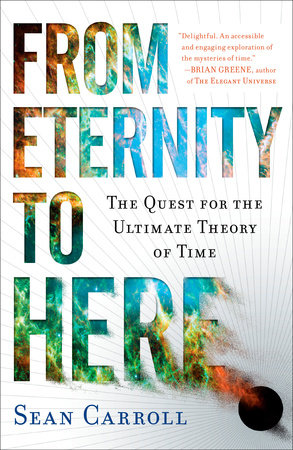

The Fabric of the Cosmos
By Brian Greene
By Brian Greene
By Brian Greene
By Brian Greene
By Brian Greene
Read by Erik Davies
By Brian Greene
Read by Erik Davies
By Brian Greene
Read by Michael Prichard
By Brian Greene
Read by Michael Prichard
Category: Science & Technology
Category: Science & Technology
Category: Science & Technology | Audiobooks
Category: Science & Technology | Audiobooks

-
$20.00
Feb 08, 2005 | ISBN 9780375727207
-
Dec 18, 2007 | ISBN 9780307428530
-
Feb 10, 2004 | ISBN 9780739309278
379 Minutes
-
Nov 12, 2003 | ISBN 9781415902349
1365 Minutes
Buy the Audiobook Download:
YOU MAY ALSO LIKE

The Hidden Reality

In Search of Schrodinger’s Cat

Warmth Disperses and Time Passes

The Book of Nothing

Through Two Doors at Once

Parallel Worlds

From Eternity to Here

A Tour of the Calculus

Zoobiquity
Praise
“Send[s] the reader’s imagination hurtling through space on an astonishing ride. . . . He is both a skilled and kindly explicator. His excitement for science on the threshold of vital breakthroughs is extremely contagious.” —The New York Times
“The best exposition and explanation of early 21st-century research into the fundamental nature of the universe as you are likely to find anywhere.” —Science
“Perhaps the single best explainer of abstruse science in the world today. . . . Greene has a gift for finding the right metaphor.” —The Washington Post
“I recommend Greene’s book to any nonexpert reader who wants an up-to-date account of theoretical physics, written in colloquial language that anyone can understand.” —Freeman Dyson, The New York Review of Books
“As pure intellectual adventure, this is about as good as it gets. . . . Even compared with A Brief History of Time, Greene’s book stands out for its sweeping ambition . . . stripping down the mystery from difficult concepts without watering down the science.” —Newsday
“Greene is as elegant as ever, cutting through the fog of complexity with insight and clarity. Space and time, you might even say, become putty in his hands.” —Los Angeles Times
“Highly informed, lucid and witty. . . . There is simply no better introduction to the strange wonders of general relativity and quantum mechanics, the fields of knowledge essential for any real understanding of space and time.” —Discover
“The author’s informed curiosity is inspiring and his enthusiasm infectious.” —Kansas City Star
“Mind-bending. . . . [Greene] is both a gifted theoretical physicist and a graceful popularizer [with] virtuoso explanatory skills.” —The Oregonian
“Brian Greene is the new Hawking, only better.” —The Times (London)
“Greene’s gravitational pull rivals a black hole’s.” —Newsweek
“Greene is an excellent teacher, humorous and quick. . . . Read [your friends] the passages of this book that boggle your mind. (You may find yourself reading them every single paragraph.).” —Boston Globe
“Inexhaustibly witty . . . a must-read for the huge constituency of lay readers enticed by the mysteries of cosmology.” —Sunday Times
“Relish this exhilarating foray into the alien terrain that is our own universe.” —Booklist, starred review
“Holds out the promise that we may one day explain how space and time have come to exist.” —Paul Davies, Nature
“Greene takes us to the limits of space and time.” —The Guardian
“Exciting stuff. . . . Introduces the reader to the mind-boggling landscape of cutting-edge theoretical physics, where mathematics rules supreme.” —The News & Observer
“One of the most entertaining and thought-provoking popular science books to have emerged in the last few years. The Elegant Universe was a Pulitzer Prize finalist. The Fabric of the Cosmos deserves to win it.” —Physics World
“In the space of 500 readable pages, Greene has brought us to the brink of twenty-first-century physics with the minimum of fuss.” —The Herald
“If anyone can popularize tough science, it’s Greene.” —Entertainment Weekly
“Greene is a marvelously talented exponent of physics. . . . A pleasure to read.” —Economist
“Magnificent . . . sends shivers down the spine.” —Financial Times
21 Books You’ve Been Meaning to Read
Just for joining you’ll get personalized recommendations on your dashboard daily and features only for members.
Find Out More Join Now Sign In

















